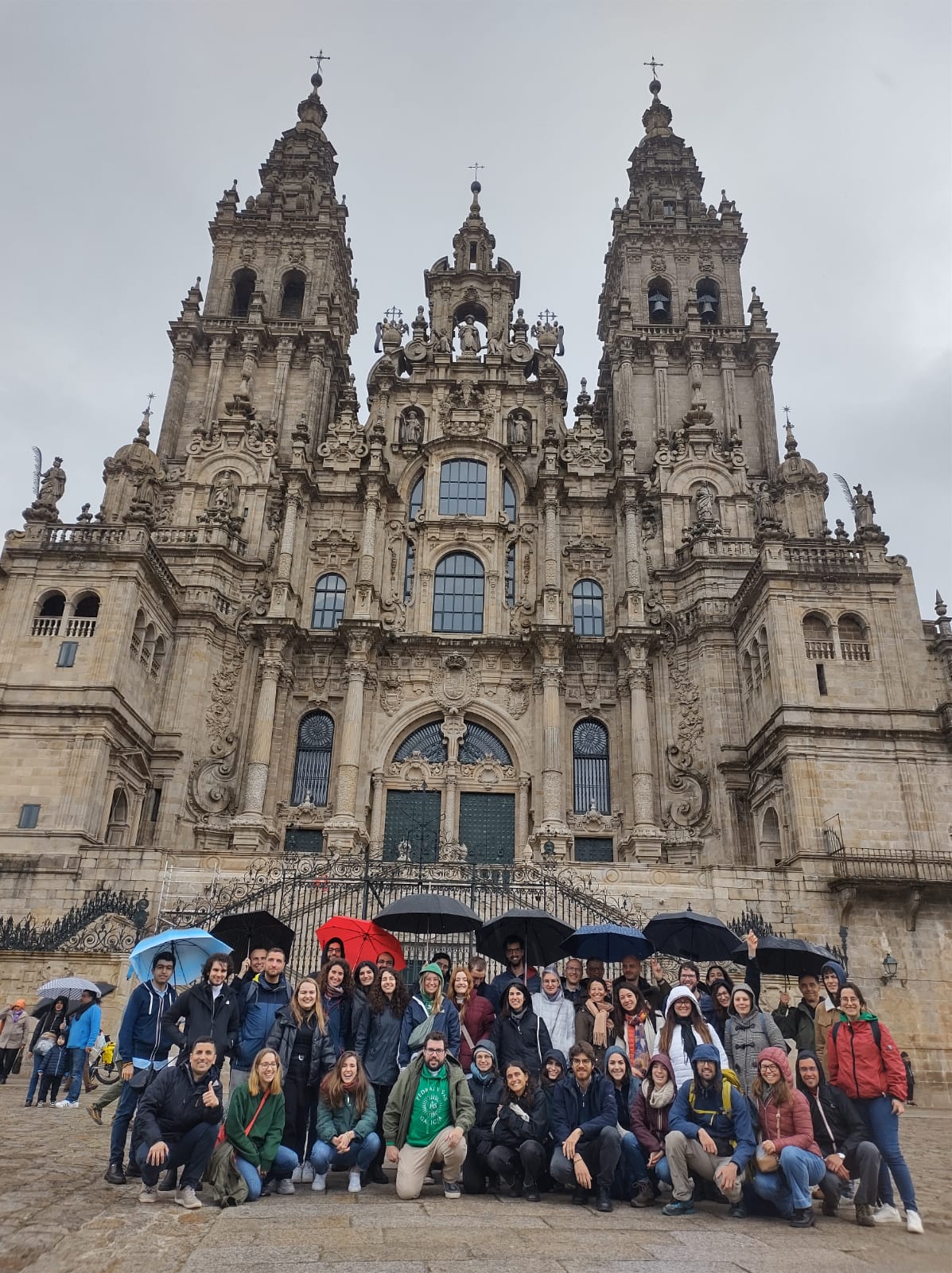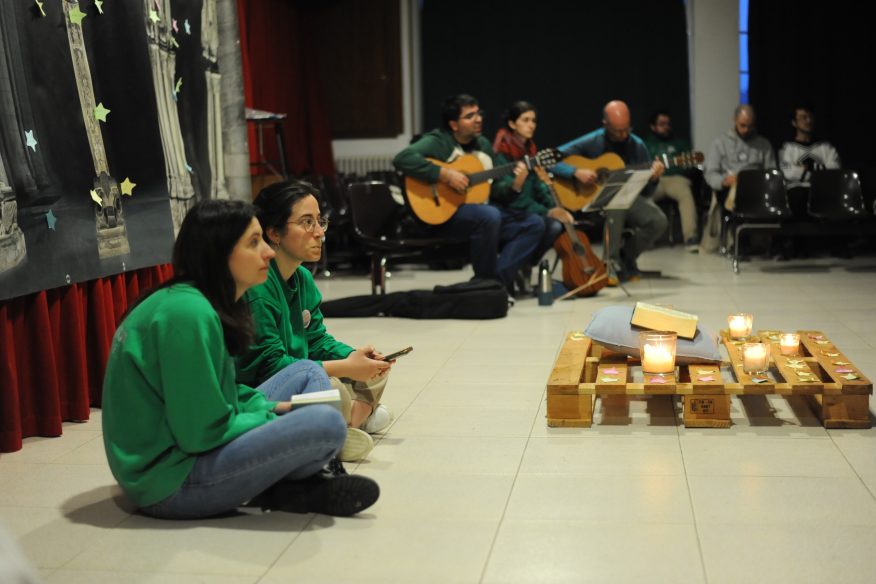Living Stones – International formation meeting in Santiago

It has been a tradition for 10 years: on the weekend closest to May 1, the Ignatian international network “Living Stones – Pietre Vive” offers a “full immersion” of study and sharing. This year the meeting took place in Santiago de Compostela, a location that further made “vibrate” the theme of the year: exile. The approximately 140 young participants had followed the spiritual stages of this theme throughout the year, in their respective cities.
In fact, a dense itinerary of prayer unites the almost 50 local communities of “living stones” scattered throughout Europe and America. “Exile” was the theme chosen for 2023/2024 because it is the condition of the young believer in the West today. Far from his comfort zone when he leaves the family and goes alone to study “outside”. Shaken in his confidence when he discovers a collapsed and absent Church. Seized by nostalgia when he feels “far from God”. The great biblical history of the exiled people then becomes its personal history. And in that nostalgia, he rediscovers that his most intimate desire is God’s desire. In that institutional collapse he understands that he is a “living stone” of the new Church. In that existential solitude he listens to the call to be himself a “comfort zone for others”.
In the days before arriving in Santiago, many of these “lay apostles” participated in one of the three previous options. The longest was the chance to get to Santiago by walking ten days on the “Camino portugués”, following the Atlantic coast. The other option was more apostolic and consisted of a “quick living stones camp” of evangelization in Aranda de Duero (Burgos), together with a large music festival. The third option seemed more “touristy” but it was no less touching: go up to the “Finis terrae” and reflect on the “extreme boundaries”. Where Saint James (in Spanish Santiago) went obeying the sending of Jesus to evangelize.
Once in Santiago, all the young people were guests of the Jesuits (who provided beds and spaces) and of the archdiocese (the diocesan delegate of university ministry was the main responsible for the event and the archbishop presided at the closing mass). The joint program was punctuated by lectures, sharing, workshops, visits and testimonies. Among the latter, the words of some real exiles, such as Catholics from Nicaragua, a history forgotten by the media, have been very striking, perhaps because the ongoing persecution is mainly directed to the Church. In the workshops, the participants were able to encounter different aspects of the exile, such as “the music of exile and medieval pilgrims”, “Jesuits in exile”, “the exile of the poorest”, “biblical exegesis of exile”, “contemplative life as exile”, “Saint James, the exiled apostle”.

One of the lectures provided a real lesson in the history of art on exile, held by Maria Dolores Fraga, Professor at the University of Santiago. In it the participants were surprised to recognize much of the “living stone’s style” in a scholar of international stature, where the deep sense of sacred art emerges from the analysis of its liturgical and spiritual context. But perhaps, the most “exiling” frontal conference, was that of the Franciscan Santiago Agrelo, bishop emeritus of Tangier. “Our hidden God is precisely the God we reject” he launched to young people. And again: “When you find an advantage, it becomes your idol”. The auditorium of the Jesuits of Santiago, who hosted the event, packed with young people, remained breathless. And when the Franciscan elder described the faith as a story of “love and lack of love”, everyone understood that faith is exile par excellence.

Back home (after a last peek at the “Portico della Gloria”), the living stones are already waiting for the theme of the next edition. The paths of previous years have had titles such as “Religion and Violence”, “What is the Church?” “The wound”, “Identity”, “Vocation”, “Welcome”,… The theme of next year will have to consider the Jubilee of the Universal Church but, above all, it will emerge from the rereading of this meeting in Santiago and from what will happen in the many summer missions to which “Living Stones” calls in July and August (Berlin, Paris, Santiago, Greece, Capri, Amsterdam, Switzerland). In Italy, in the various local Ignatian realities, the young people returning from Santiago are already sharing their experience with peers who participated in the same days at the first great youth gathering, “Magis” event, with which many Italian living stones were deeply connected.

